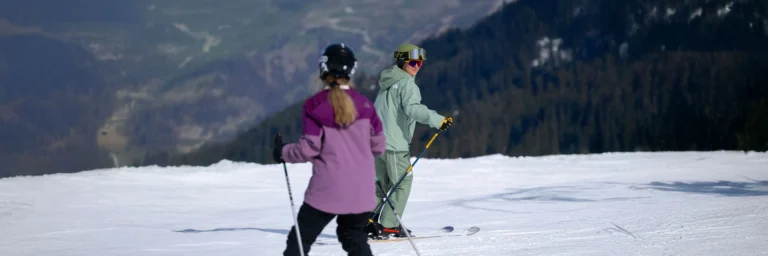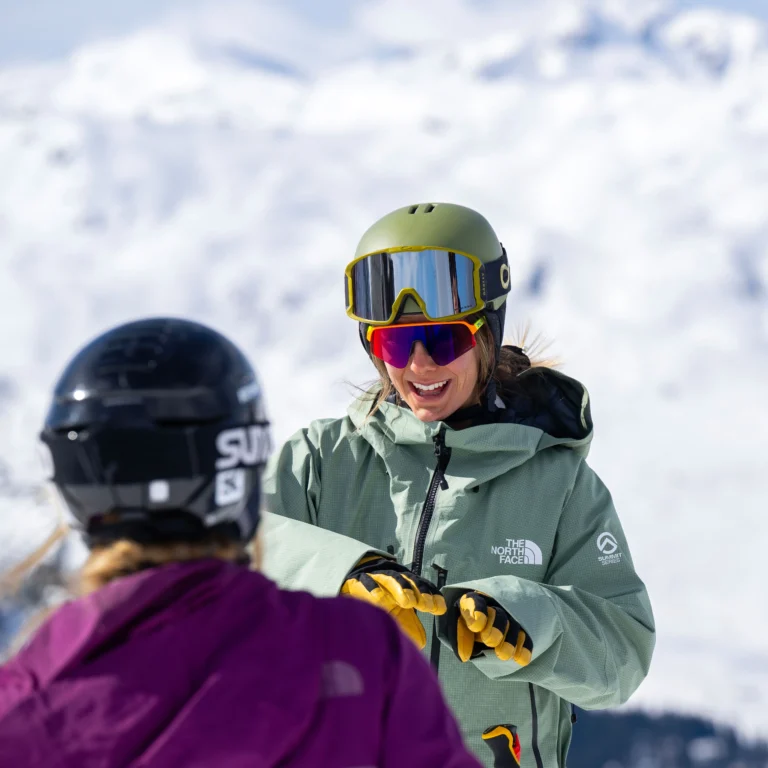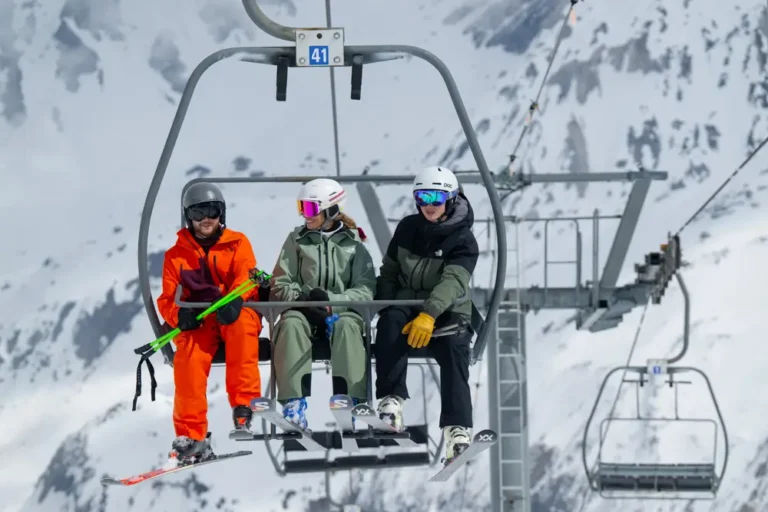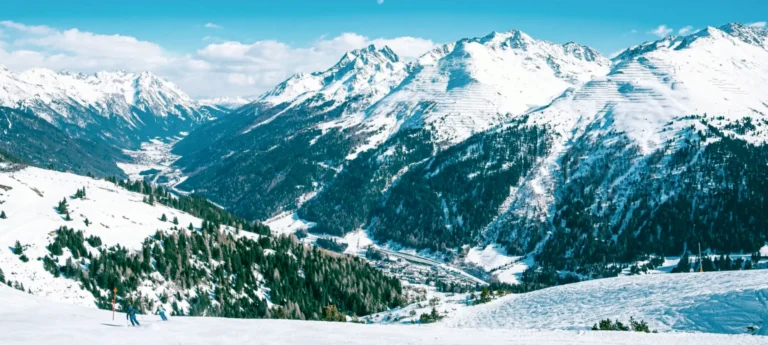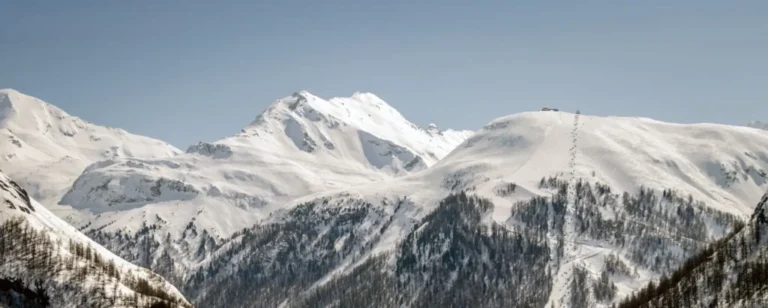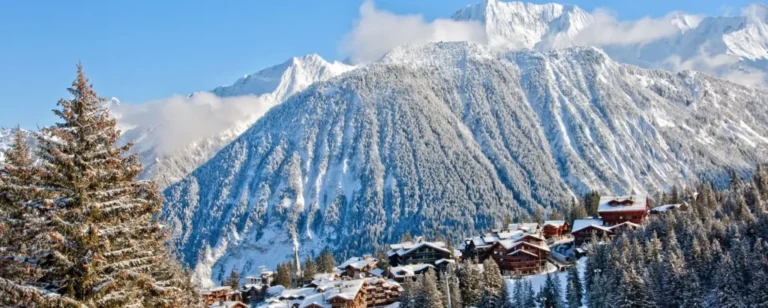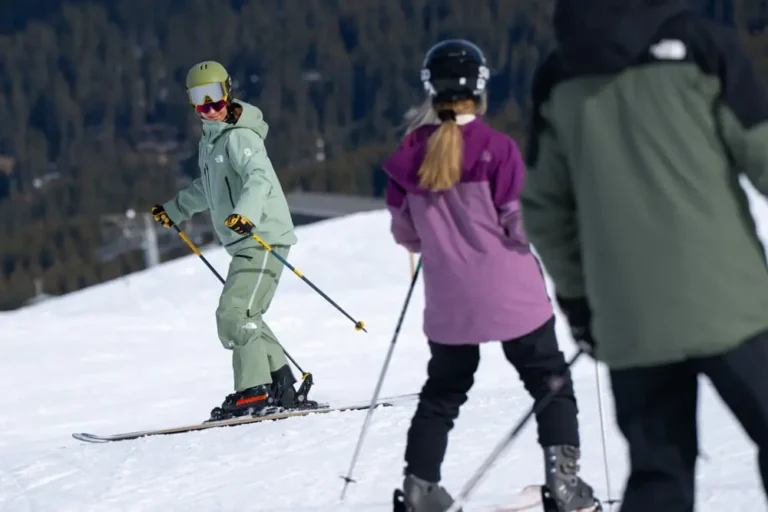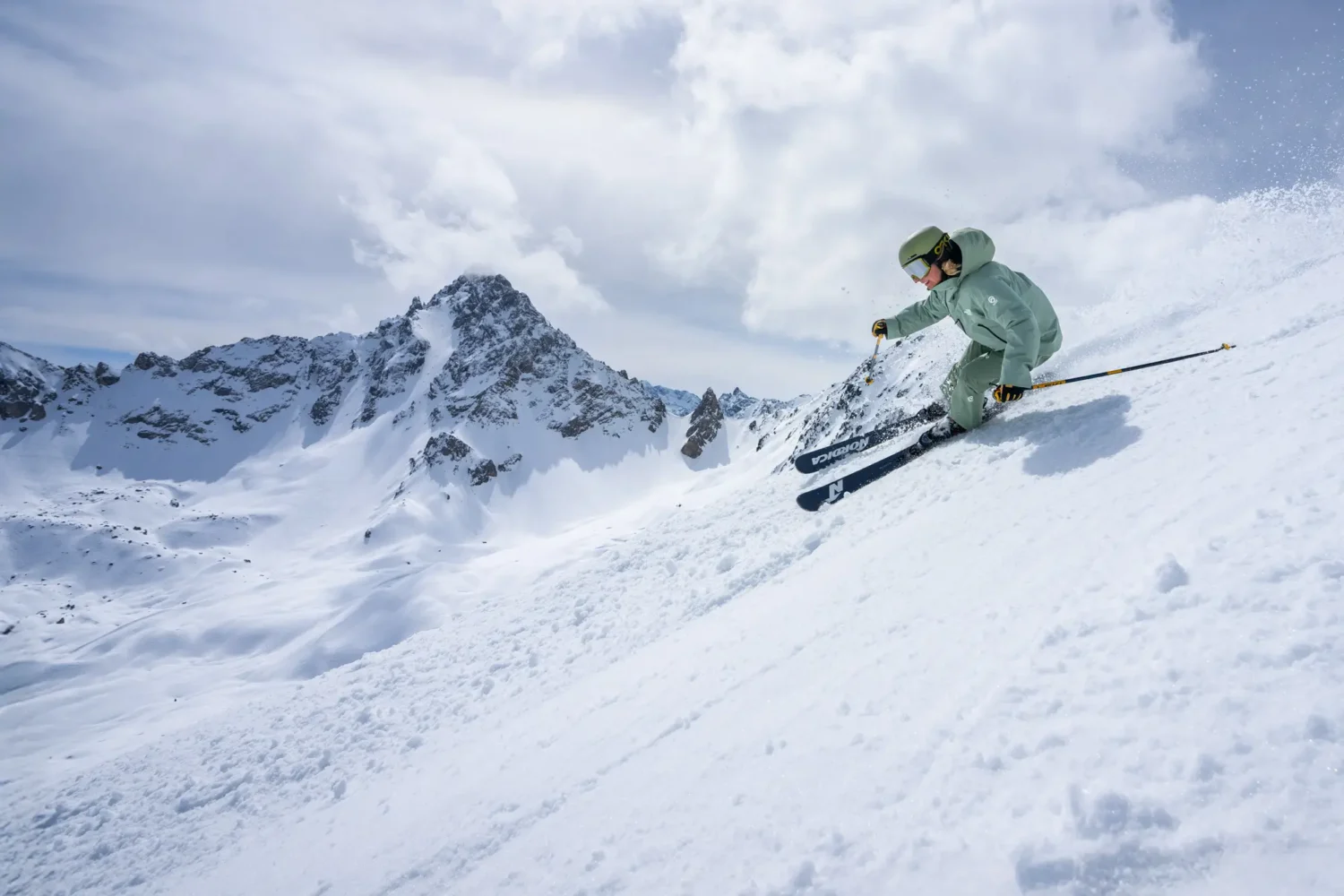In the next five minutes, you’ll know which five Lech pistes to try first, where each one starts, the easiest lift to take, and how to get down safely.
Lech is a well-known luxury resort that is among the most beginner-friendly resorts in the Alps, thanks to its sheltered learner zones and wide blues.
How to use this guide
If this is your first ski holiday, a few key terms will help before you hit the snow. When we say beginner-friendly, we mean wide greens or very mellow blues that are reliably groomed and easy to navigate.
Pistes in Lech are colour-coded: Blue for gentle slopes, Red for steeper gradients, then Black for steep technical terrain.
There are different types of lifts in Lech. These are drag lifts, chairlifts and gondolas.
A download means that you can ride the lift back down instead of skiing. This is perfectly normal if you’re tired or the weather changes.
Each route card in this guide includes.
- Why it’s great – what makes that piste ideal for learning.
- How to get there – which lifts or meeting points you’ll need.
- First lap tip – an insider hint for your first descent.
- Bail-out – your safe route down or back if you’ve had enough.
- Good times to ski it – when conditions or crowds are best.
The Five Best Beginner Pistes
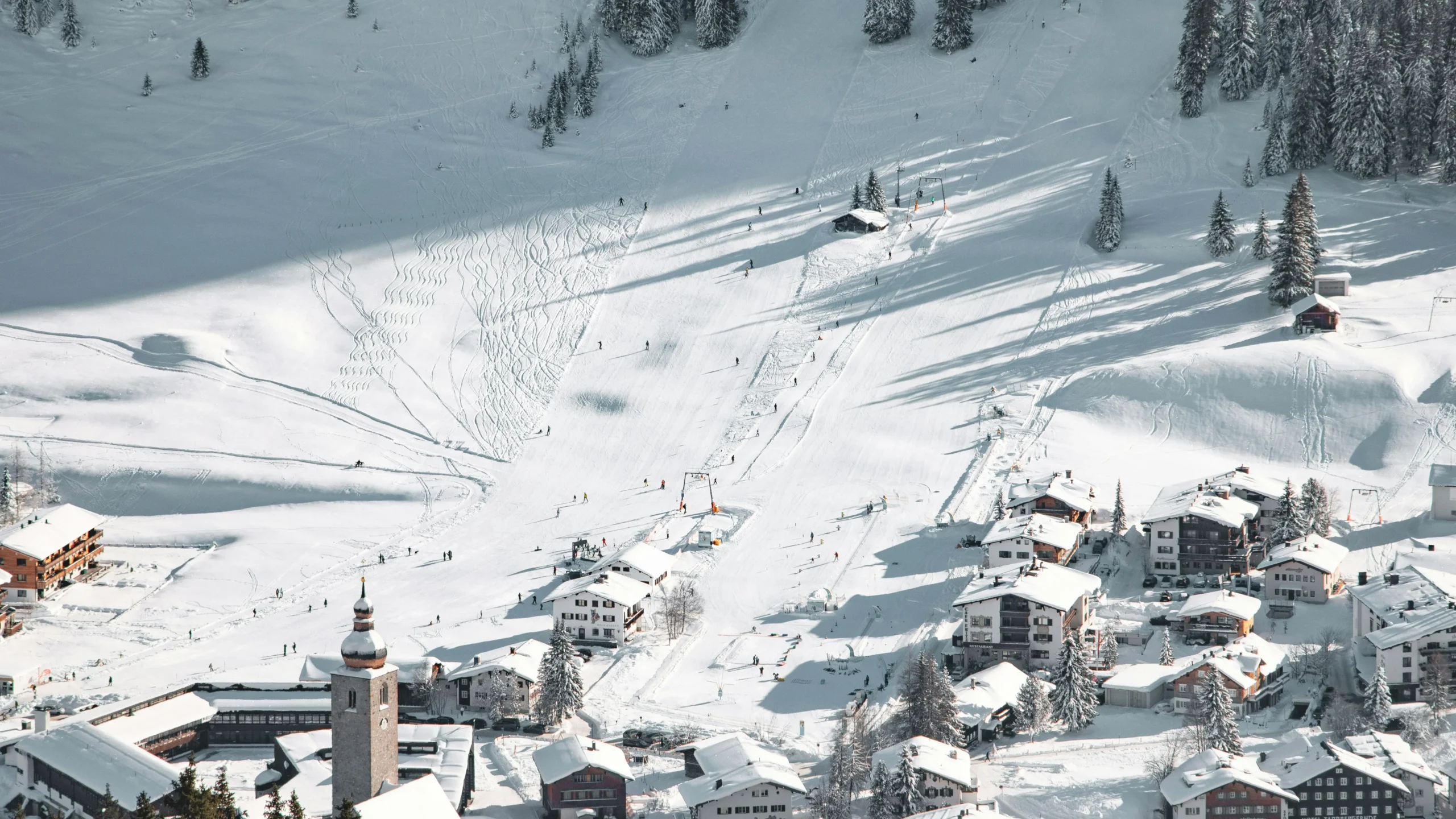
Below are five confidence-building pistes, starting with the mellowest and progressing gradually.
1. Flühen Beginner Area – Green
Why it’s great – Sheltered, sunny, quiet and purpose-built for day-one skiers. The Flühen drag lift keeps everything simple and gentle.
How to get there – From Lech village centre, walk or slide to the Flühen lift area next to the riverside promenade, where ski schools often meet.
First-lap tip – Do your introductory activities and get comfortable sliding on your skis before you use the lift. Stay skier’s right for the very flattest line. This will help you when you’re getting started.
Bail-out – As the area is at the village level. Step off the snow if you’re finished.
Good times to ski it – Anytime, but the snow conditions are best in the morning, particularly late in the season.
2. Blue 200
Why it’s great – Blue 200 is a long rolling blue run that will give you your first “real mountain” feeling without being intimidating. The 4.5-kilometre-long piste will let you practise by getting miles under your skis.
How to get there – Take Schlegelkopf. From the top, follow the signs for Blue 200. Take the mid-section only, avoiding the steepest upper section.
First-lap tip – Halfway down there is a slight flat section. Try to keep some speed up heading into this. Don’t worry about going too quickly, as the slope will slow you back down. Starting the flat section too slowly will be very tiring.
Bail-out – Download on the Bergbahn Lech-Oberlech if you don’t want to ski the very end section of the piste.
Good times to ski it – Great to ski throughout the day. The lower sections will see more traffic and be warmer, so they may deteriorate near the end of the day. Poor visibility will affect the higher sections more.
3. Blue 201
Why it’s great – 201 is a fairly long piste at 3,614 m. This is great for getting miles under your skis. 201 also lets you ski down to Lech without encountering anything too difficult.
How to get there – Begin at the Schlegelkopf area. This is accessible via the Schlegelkopfbahn.
From the top station, you pick up piste 201. This leads down via the Rudalpe area. The route then descends back into Lech.
First-lap tips – On your first lap, use the section near Rudalpe. It’s less steep and more forgiving. Because the run is quite long, aim to practise long, swinging turns to steady your rhythm.
Where to bail – If you change your mind, you can ski the 200 from where the 201 starts. This will take you to the Bergbahn Lech-Oberlech, where you can download.
Good times to ski – The morning is the best, as the snow will usually be at its best. Later in the day, you may encounter heavier snow or busier slopes as people return to Lech.
4. Blue 235
Why it’s great – 235 is an excellent rolling piste that lets you explore further from Lech than you’ve done before. As it’s one of Lech’s higher runs, it also typically has more consistent snow conditions.
How to get there – 235 begins near the summit of Zuger Hochlicht. It can also be accessed halfway up by the Rotschrofenbahn.
First-lap tips – Make sure you don’t accidentally take a red run. It’s much better to build confidence on Blue runs than to push yourself too early on red runs.
Where to bail – Unfortunately, there are no easy second options on 235. All other alternative pistes up here are red coloured. If you get halfway down, you can download on the Rotschrofenbahn. You can reach the 200 on the Bergbahn Lech-Oberlech if you don’t want to ski all the way down.
Good times to ski – The morning is the best, as the snow will usually be at its best. Later in the day, you may find heavier snow or busier slopes with people returning to Lech.
5. Blue 210
Why it’s great – A mellow upper-mountain cruiser with stunning views and a consistent gradient.
How to get there – Take the Weibermahd chairlift from Oberlech. From the top, follow blue signs for 210 and stick to the clearly marked easy section feeding toward Petersboden.
First-lap tip – When you see the 210 and 200 split at the top of the draglift Übungslift Oberlech, start to follow the 200. Make sure you don’t miss this. It will be on your right. The bottom section of the 210, next to Hotel Restaurant Formarin and the Schlosskopft Bahn, is quite steep.
Bail-out – Ski back to Oberlech on blue 200 and download on Bergbahn Oberlech.
Good times to ski it – Mid-morning when the sun reaches the slope.
Suggested Progression Loop
A simple half-day progression:
- Two warm-up laps on Flühen
- Ski the Blue 200 to the Bergbahn
- Explore the Blue 235 and the Blue 201
- If energy stays high ski the Blue 210
Common Beginner Pitfalls in Lech (and Fixes)
Pushing on when tired – Don’t push yourself too hard if you’re exhausted, and download safely. You’ll enjoy your trip much more if you take it at your own pace. Don’t feel pressured to ski from the first lift to the last every day.
Not checking live conditions – Before heading up, check the lift slope statuses. This will help you to avoid closed or foggy terrain.
Forcing the home run – The bottom section next to the Bergbahn is on the steeper side for a blue run and may get bumpy. Take the lift down if you’re worried about this.
Facing terrain that is too difficult – Save the piste map on your phone. You should also plan short sessions, and don’t hesitate to download if conditions or legs change.
Skipping lessons – If you’re ready to learn the easy way, check our Lech ski lessons for beginners and book early to secure the best slots.

